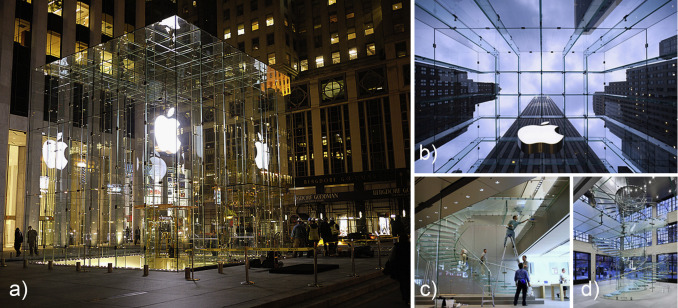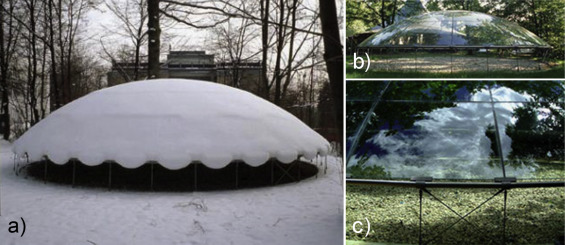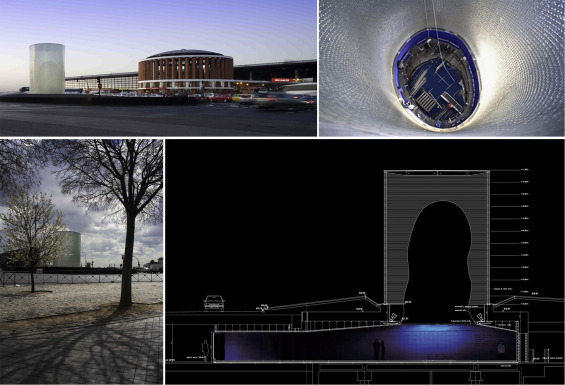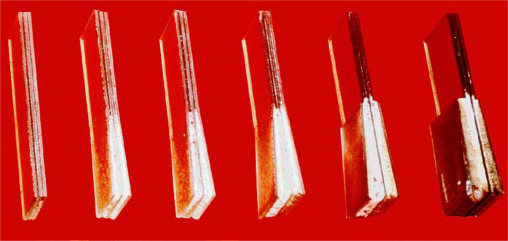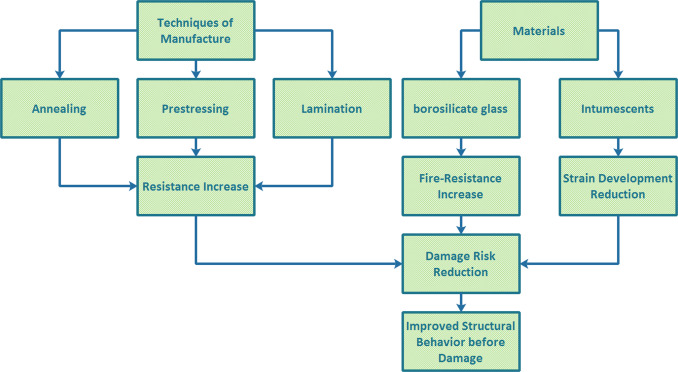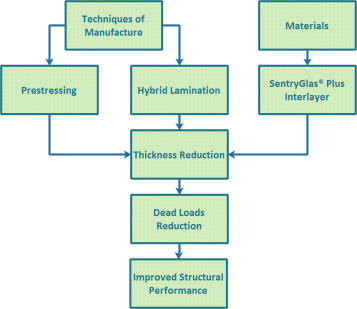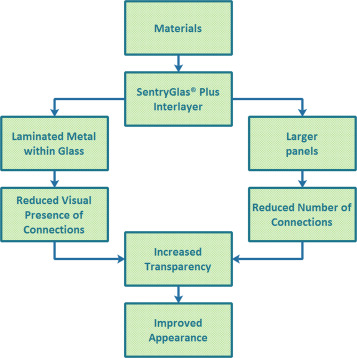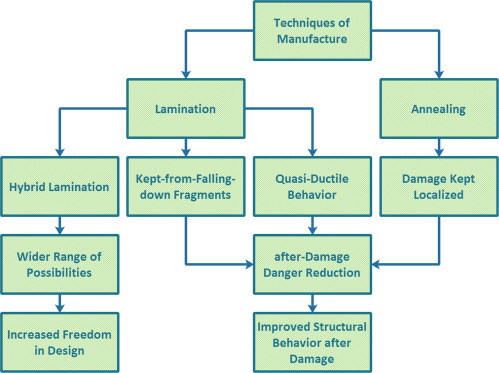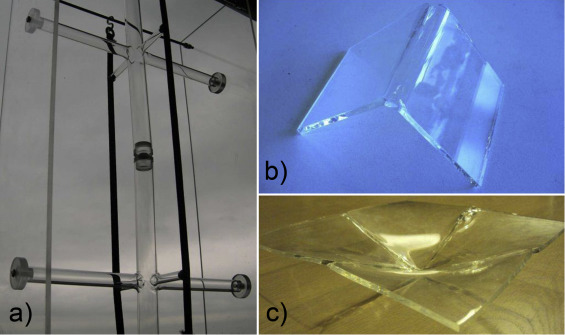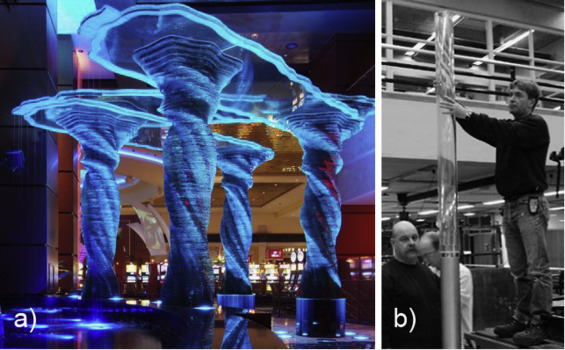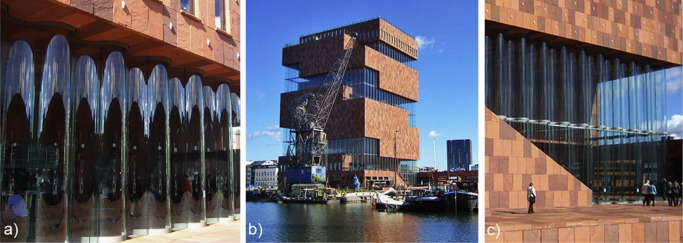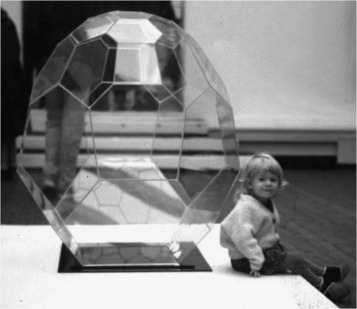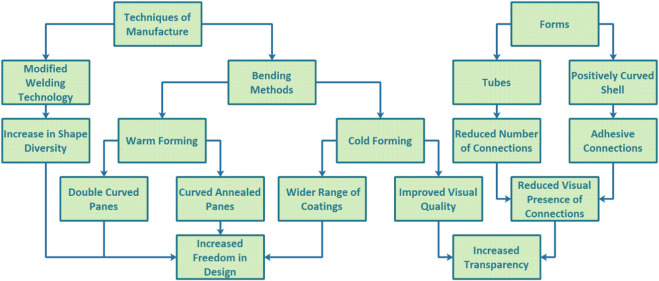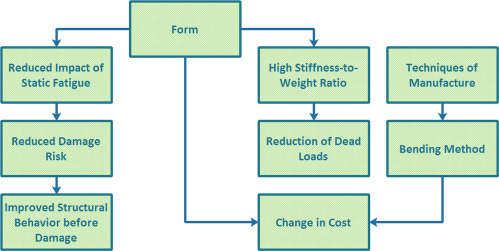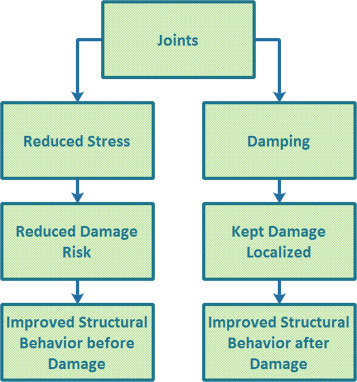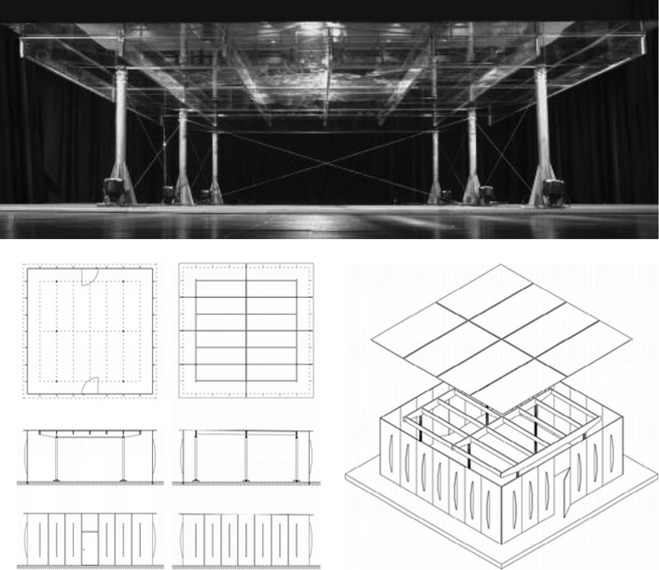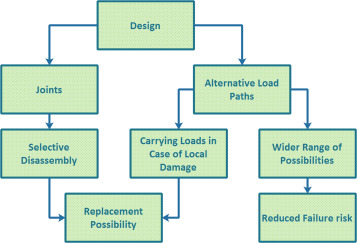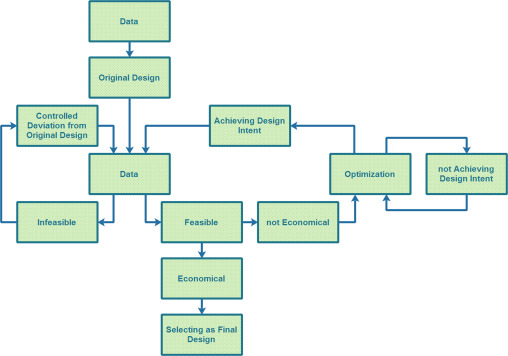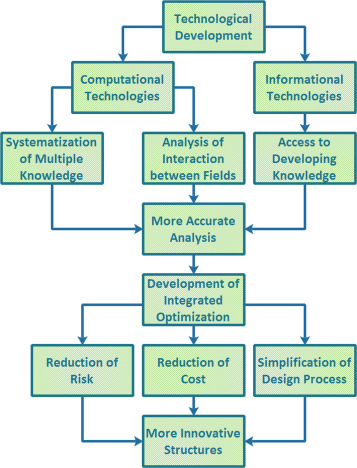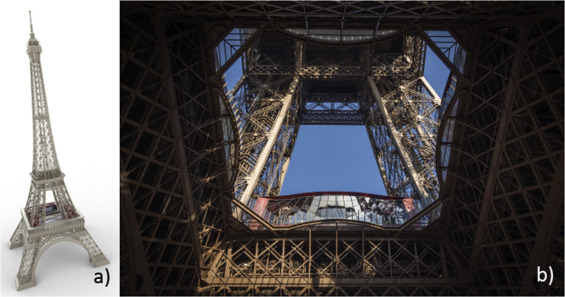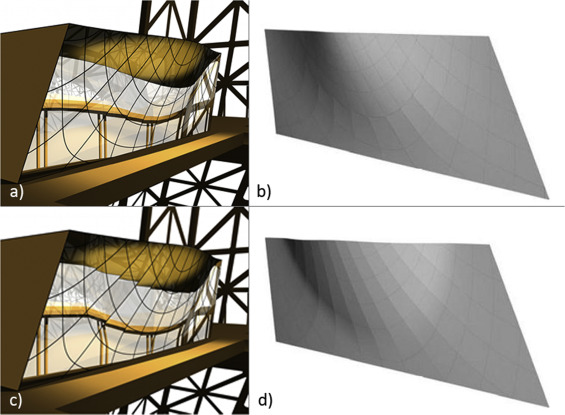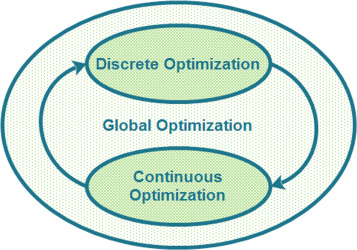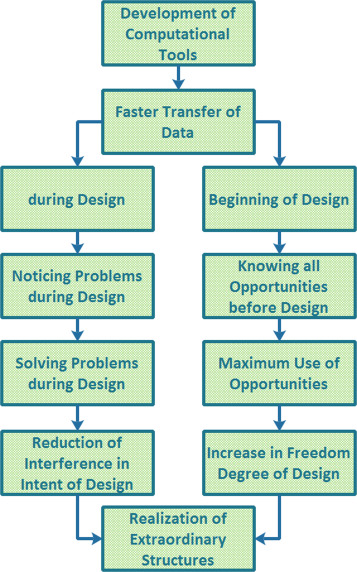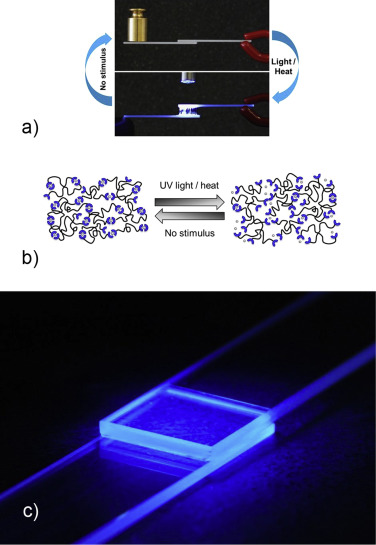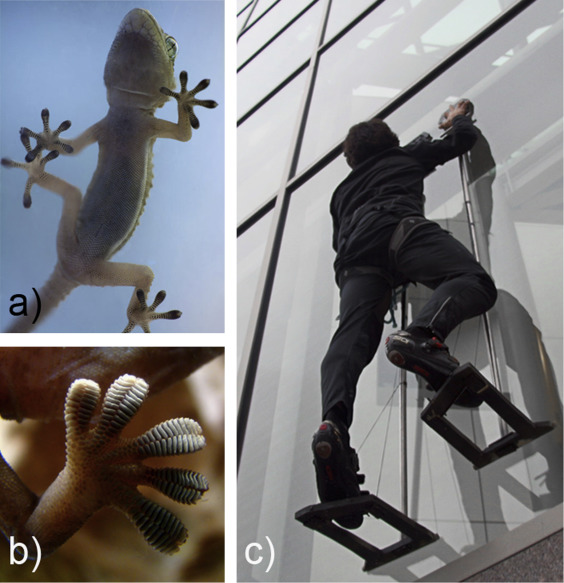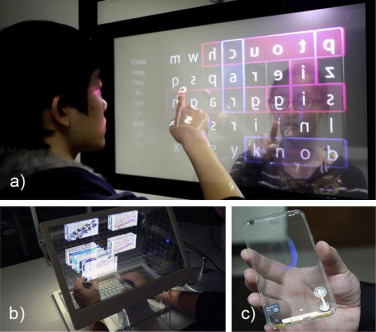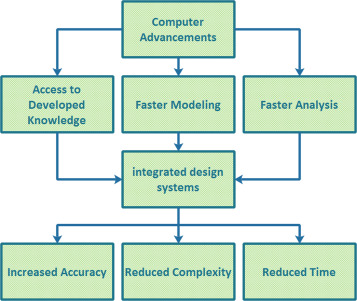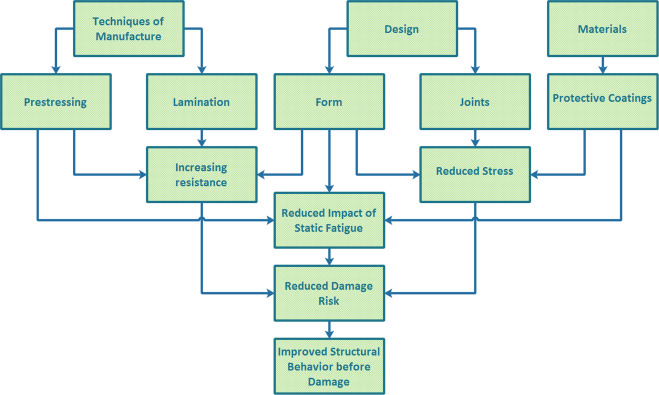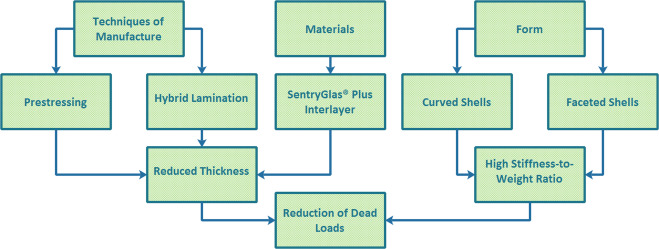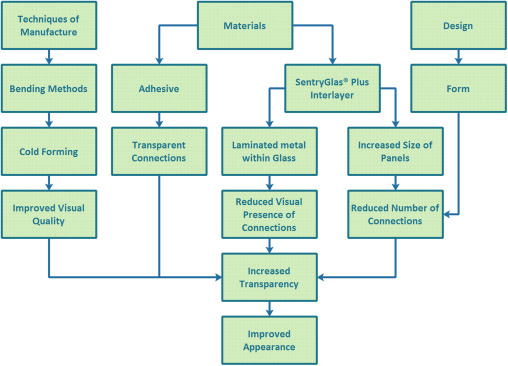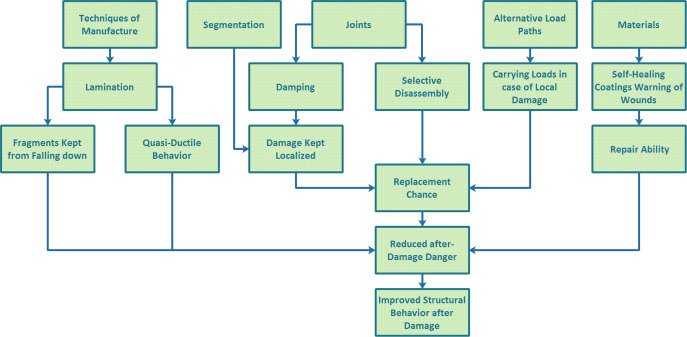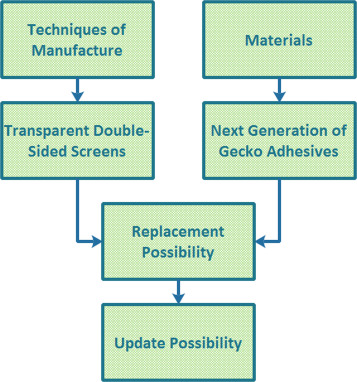Abstract
In the past few decades, the use of glass in buildings has remarkably increased. As a result, several transparent buildings have been constructed, in which the materials have almost disappeared. Given that the advancement of architecture is inextricably linked to the acquisition of general knowledge on future developments, this study was conducted to predict the paths of development that glass structures are likely to take in the future. Investigations such as this increase the possibility of advancing both design and construction at the same speed as technology. To achieve this goal, this study evaluates the present situation by investigating new possibilities and assessing their effect on the development of glass buildings. The findings of this study show that the durability, safety, appearance, and efficiency of transparent buildings can be improved through continuous refinement of designs, replacement of aged elements, prompt repair of damaged protective coatings, and greater exploitation of double-sided screens.
Keywords
Transparent building ; Glass structure ; Shell ; Adhesive ; Self-healing
1. Introduction
Glass has been used in construction since approximately 2000 years ago (Knaack, 2008 and Mocibob, 2008 ). In recent decades, the application of this environment-friendly material has been developed in the field of construction because of the following characteristics of glass:
- Very high compressive strength (Hess, 2004 and Luible and Michel, 2004 ).
- Resistance to corrosion (Hess, 2004 and Wilson and Vasilchenko-Malishev, 2005 ).
- Recyclability (Nijsse, 2003 and Siebert, 2002 ).
- Reduction of energy consumption (Siebert, 2002 and Tückmantel, 2009 ).
- Recent advancements in glass coatings (Bostick, 2009 and Tückmantel, 2009 ).
- Development of computers and programs.
- Growth of the demand for the architecture of thinner and more transparent structures (Bostick, 2009 and Luible and Michel, 2004 ).
More transparent buildings have been constructed, in which the visual presence of materials has decreased. To refine the design and construction of transparent buildings and modify their structural behavior, both before and after damage, as well as all the remaining opportunities, should be carefully identified. For this purpose, this study analyzes the opportunities presented by recent advancements to improve both the appearance and efficiency of glass buildings. It then predicts how each novel approach can affect the future of transparent buildings.
The results of the study indicate that scientific and technological progress opens up the opportunities to select the optimum solutions in the course of an interactive design process, to replace aged elements and repair transparent protective coatings in a very short time. Moreover, through the application of revolutionary reversible adhesives, transparent double-sided screens can be fully exploited in glass buildings. Thus, advancements in science and technology ensure that the next generation of transparent buildings are more beautiful, more durable, safer, and even more useful.
2. Design optimization
2.1. Selection of materials
2.1.1. Laminated glass
Lamination modifies the structural behavior of glass, both before and after breakage (Bon, 2003 and Callewaert et al., 2009 ). On the one hand, laminated glass is more resistant to buckling given that each layer of laminate is laterally supported by other layers (White, 2007 ). On the other hand, it exhibits quasi-ductile behavior (Vandebroek et al., 2014 and White, 2007 ) because after breakage, the broken pieces of glass remain bonded to the interlayer (Bagger et al., 2007 , Delincé et al., 2008 and Hess, 2004 ). Given that the crack blocking mechanism of the interlayer prevents cracks from opening up over the full width of the laminate (Bos, 2009 , Louter, 2011 and Louter et al., 2011 ), the local cracks in one layer can be bridged by the glass fragments of the lateral layers so that forces can be transferred over the cracks via shear in the interlayer (Bos, 2009 and Louter, 2011 ). For this reason, the damaged laminate shows higher residual strength (Bos, 2009 ).
Moreover, the properties of laminated glass can now be enhanced with the SentryGlas® Plus (SG) interlayer (Bennison et al., 2002 , Bennison et al., 2006 , O’Callaghan, 2003 and Puller et al., 2011 ), so that both larger and thinner (Puller et al., 2011 ) laminated panels can be manufactured using this interlayer (Bennison et al., 2006 and O’Callaghan and Coult, 2007 ). In addition, given its superior flow characteristics, this interlayer opens up the possibility of laminating metal within the body of the glass (O’Callaghan and Coult, 2007 ), thereby resulting in thinner joints (Figure 1 a–d). Furthermore, the SG interlayer maintains its bond strength and shear stiffness within the temperature range of −20 °C to +60 °C (Bos, 2009 and Louter et al., 2011 ).
|
|
|
Figure 1. Thinner joints: the SG interlayer has the best flow characteristics. Thus, metal can be laminated within the body of the laminated glass, which results in thinner joints (Erickson, 2014 ) (a), (Aaron) (b), (Gheorghe, 2010 ) (c), and (Designrulz) (d). |
2.1.2. Tempered glass
In the process of annealing, glass is cooled slowly (Chinzi, 2013 ). As a result, internal stresses, which significantly decrease the overall strength of glass, are significantly reduced (CMog, 2011 ). Furthermore, annealed glass can transfer compressive forces even after breakage because it breaks into large shards (Bos et al., 2005 and Feirabend, 2008 ). Consequently, laminated glass made of annealed glass has higher post-breakage strength (Feirabend, 2008 ). Nonetheless, annealed glass is not only sensitive to thermal shocks but also unsafe in the case of fire incidents (Veer et al., 2001b and Wilson and Vasilchenko-Malishev, 2006 ).
The structural performance of glass can be improved through artificial pre-stressing (Núñez et al., 2011 ). Pre-compression increases the tensile strength of glass, thereby decreasing its susceptibility both to thermal shocks and to static fatigue (Unknown, 2000 , Tokunaga et al., 2007 and Wurm, 2007 ). Thus, the cross-sections of structural elements may be thinned using tempered glass (Núñez et al., 2011 ). However, thinner cross-sections are more sensitive to buckling (Belis et al., 2005 ).
Glass can be tempered either thermally or chemically (Phillips, 1941 ). Since chemical tempering causes shallow but intense surface pre-compression, very thin glass panes can also be tempered through this method (Wurm, 2007 ). The shallow depth of pre-compression retains the high susceptibility of glass to surface defects (Wurm, 2007 ). Additionally, chemically tempered glass breaks into many small fragments, and thus, it has almost no residual strength.
Thermal tempering increases the resistance of glass to thermal shocks (Wurm, 2007 ). During the process of thermal tempering, glass is tempered either partially or completely (Wurm, 2007 ). The product of partial tempering is called heat-strengthened glass (Wurm, 2007 ), which breaks into large pieces, so that the laminate made of this type of glass has increased residual strength (Feirabend, 2008 ). The other product, which is called thermally tempered glass, is produced by complete tempering (Wurm, 2007 ). It is far more resistant than heat-strengthened glass (Wurm, 2007 ), although it breaks into many small fragments (Bos et al., 2005 , Feirabend and Sobek, 2009 and Hess, 2004 ). Accordingly, the laminate made of this type of glass has almost no residual strength (Feirabend and Sobek, 2009 ). Furthermore, a phenomenon particular to thermally tempered glass is spontaneous fracture (Wurm, 2007 ). The process of heat-soaking reduces the probability of spontaneous fracture, although it does not eliminate the risk completely (Building Construction Practices Sectional Committee, CED 13, 2011 , Chan, 2006 , Haldimann, 2006 , Kasper and Yousfi, 2009 , Mocibob, 2008 and Wurm, 2007 ). Moreover, the heat-soaking process increases the cost of producing tempered glass (Jacob, 2001 ).
In summary, each type of glass has its own particular advantages and disadvantages. To take advantage of different positive aspects, hybrid laminates have been made, which are composed of various types of glass (Belis and Rudy Van Impe, 2005 and Chaszar, 2003 ). Using hybrid laminates, the dead load is reduced considerably (Blandini, 2003 ) (Figure 2 b), and structural performance is improved economically (Chaszar, 2003 ).
|
|
|
Figure 2. Shell structures: in a shell structure, the loads are absorbed by the overall shape of the structure, as a result it has a high stiffness-to-weight ratio (Blandini, 2005b ) (a). The hybrid laminates reduce the dead loads considerably, thereby allowing for a slender supporting system (Gore, 2004 ) (b). The supporting titanium ring has the same temperature elongation ratio as glass, thereby minimizing the loadings caused by temperature changes (Gore, 2004 ) (c). |
2.1.3. Fire-resistant materials
The poor fire resistance of ordinary glass limits its use as a structural material (Veer et al., 2001b ). Unlike ordinary glass, borosilicate glass is resistant to fire (Boström, 2002 , Leitch, 2005 and Veer et al., 2001b ) (Figure 3 ) but is not commonly used in construction (Veer et al., 2001b ). Transparent fire-protective materials can also improve the performance of glass structures during exposure to fire (Veer et al., 2001b ). For example, transparent intumescent coating reduces thermal exchange by slowing down the development of thermal strain in glass elements (Veer et al., 2001b ). Furthermore, after small fires, the need to replace structural glass elements is eliminated when easily replaceable intumescent paint is used on them (Veer et al., 2001b ). Moreover, when a clear intumescent interlayer is heated, it swells and turns into an opaque insulating foam (Figure 4 ), thereby slowing down the development of thermal strain (Boström, 2002 ). However, the effects of aging on the fire resistance of intumescent materials is yet to be determined (Boström, 2002 ).
|
|
|
Figure 3. Borosilicate glass: in the March 11 memorial in Madrid, both the roof and wall are constructed with borosilicate glass, which can resist thermal shocks (OpenBuildings ). |
|
|
|
Figure 4. Clear intumescent interlayer: when exposed to fire, it turns into an opaque fire shield (AGC, 2008 ). |
Thus, the appropriate selection of materials and manufacturing methods improves the safety, efficiency, and appearance of glass buildings. For instance, the use of adequate materials improves the safety of transparent structures during exposure to fire by increasing the fire resistance of glass elements or by slowing down the development of thermal strain in them (Figure 5 ). Moreover, thinner and lighter transparent buildings can be created using materials or techniques that decrease the required thickness of glass elements (Figure 6 ). By contrast, some materials can reduce the number or visual presence of needed connections, thereby increasing the integrity and transparency of glass buildings (Figure 7 ). In addition, the accurate selection of materials and manufacturing methods can improve the structural behavior of glass buildings both before and after damage (Figure 5 and Figure 8 ). However, each material or technique presents its own limitations, which must be dealt with during the design process. In other words, glass structures must be designed with respect to both positive and negative effects of different alternatives on the entire project to select the optimal solutions that cost-effectively meet the predefined requirements of the project.
|
|
|
Figure 5. Reduction of damage risk: efficient materials and manufacturing methods can improve the structural behavior of glass elements by increasing their resistance. |
|
|
|
Figure 6. Reduction of dead loads: using some interlayer or fabrication techniques results in thinner and lighter glass elements. |
|
|
|
Figure 7. Potential for more transparency: the interlayer SG can improve the transparency of glass structures by reducing both number and thickness of joints. |
|
|
|
Figure 8. Increase in freedom and safety: an accurate selection of manufacturing methods can improve both diversity and durability of transparent structures. |
2.2. Selection of form
2.2.1. Curved structural elements
2.2.1.1. Techniques of forming
Laminated glass is produced in various bent shapes (Aşık et al., 2014 ). However, bent glass is more expensive to fabricate than flat glass (Aanhaanen et al., 2008 ). Additionally, a double-curved element is more expensive than a single-curved one (Aanhaanen et al., 2008 ). Bent glass is manufactured by either plastic deformation (warm bending) or elastic strain (cold-bending) (Chinzi, 2013 ).
During the warm bending process, flat glass is placed on a mold and then sufficiently heated to be formed while still in its plastic state (Chinzi, 2013 and Doulkari, 2013 ). It is then allowed to cool slowly (Doulkari, 2013 ). The product of the process, called annealed glass, can also be tempered (Bon, 2003 and Doulkari, 2013 ). Single-curved panels can be tempered either thermally or chemically, although complex shapes can only be tempered chemically (Fildhuth et al., 2012 and Wurm, 2007 ). After tempering, curved panes are laminated (Bon, 2003 ). To improve the quality of the laminate, flat panes separated by fleece layers are laid over each other and bent at the same time. This method minimizes the tolerance between the panes (Kramer and Elstner, 2012 ). Moreover, when the welding technology is fine-tuned, much more complex shapes can be produced (Bos et al., 2008 ). To produce glass welds as strong as the main material, substrates must be heated evenly (Belis et al., 2011 ). At present, welded glass elements are limited to tubular shapes (Figure 9 a) because evenly heating the substrates of flat glass using current techniques is difficult (Bos et al., 2008 ) (Figure 9 b and c).
|
|
|
Figure 9. Glass welding in the construction industry: at present, welded elements that are tubular in shape can be used as structural elements (Bos et al., 2008 ) (a). Using the existing techniques, the non-tubular glass substrates cannot be evenly heated (Belis et al., 2011 ) (b) and (Belis et al., 2011 ) (c). |
Cold-formed glass has better visual quality (Timm and Chase, 2014 and Vákár and Gaal, 2004 ). In addition, a wide range of coatings can also be used on it (Fildhuth and Knippers, 2011 ). However, only tempered glass with high long-term strength can be bent through cold-forming (Wurm, 2007 ). This method reduces the ultimate load bearing capacity of curved sheets because it creates permanent bending stresses in them (Wurm, 2007 ). The stresses increase with the size of the deformation and the tightness of the radius (Wurm, 2007 ). Moreover, only single-curved surfaces can usually be produced by cold-forming (Wurm, 2007 ). Thus, double-curved surfaces should be transformed into single-curved parts to construct double-curved shells through this technique (Feijen et al., 2012 ).
Through cold-forming, glass can be bent either before or after lamination (Doulkari, 2013 , Fildhuth and Knippers, 2011 , Kassnel-Henneberg, 2011 and Vákár and Gaal, 2004 ). Frameless cold-bent glass can also be manufactured through lamination with a stiff interlayer (Kassnel-Henneberg, 2011 ). In addition, thin glass sheets can be bent with this technique (Lambert and James, 2013 ).
2.2.1.2. Tubes
The tube is one of the best shapes for a structural glass column (van Nieuwenhuijzen et al., 2005 ). First, it does not buckle because its buckling strength is significantly higher than its compression strength (van Nieuwenhuijzen et al., 2005 ). Second, a tubular column is much more transparent than a stacked one (Figure 10 a and b). Third, the risk of de-lamination is lower in a tubular-laminated glass column because the exposed length of the interlayer is shorter in it. Furthermore, a tubular-laminated glass column exhibits gradual and safe failure behavior in pure compression because the damaged glass tubes can still carry loads until a complete cross-section at a particular height is de-laminated (van Nieuwenhuijzen et al., 2005 ).
|
|
|
Figure 10. Glass columns: tubular glass columns (Bos, 2009 ) (b) are much more transparent than stacked ones (Matthews, 2011 ) (a). |
However, the structural use of these columns poses specific problems (Bos et al., 2008 ). For example, the following conditions cause local stresses in them:
- Slight difference between the lengths of the inner and outer tubes (van Nieuwenhuijzen et al., 2005 ).
- Distortions at the ends of the tubes (van Nieuwenhuijzen et al., 2005 ).
- Inappropriate support conditions (van Nieuwenhuijzen et al., 2005 ).
Furthermore, connecting glass tubes to external structures presents new challenges (Bos, 2006 ).
2.2.1.3. Curved shells
The shells of positive curvature are perfect for construction of glass structures (Aanhaanen et al., 2008 ). They minimize bending stresses (Bagger et al., 2007a ) and primarily transfer loads via membrane stresses (Aanhaanen et al., 2008 , Bagger et al., 2007 and Blandini and Arch, 2008 ). Their stiffness-to-weight ratio is also high (Figure 2 a) since they absorb loads with their overall shape instead of a local sectional area (Bagger, 2010 and Bagger et al., 2007 ). Furthermore, as a result of adhesive technology, completely transparent shell structures can now be constructed (Blandini, 2007 , Blandini and Arch, 2008 , Blandini and Sobek, 2014 and Blandini et al., 2014 ) (Figure 2 b). Adhesive joints can form glass surfaces without any optically interrupting element (Blandini, 2003 and Blandini and Arch, 2008 ). In addition, they join glass panes along their edges (Blandini, 2003 ), thereby minimizing stress concentrations.
Corrugated panels can be used both as facades (Figure 11 a–c) and as load carrying walls (Nijsse, 2008 ). By contrast, corrugated walls carry short-term loads through shell action and support permanent loads mostly through diaphragm action, thereby avoiding permanent high stresses in laminates and joints (Fildhuth and Knippers, 2011 ). However, the use of corrugated glass walls is limited by the size of bent panels, which cannot be fabricated at a length larger than 6 m (Nijsse, 2008 ).
|
|
|
Figure 11. Corrugated panels: corrugated panels can be used as facade (Lisa, 2013 ) (a–c). |
Double-curved shell structures are more efficient (Aanhaanen et al., 2008 ). A double-curved element can carry both axial forces and uneven loads without bending (Bon, 2003 ). Thus, it minimizes long-term bending moments, thereby preventing the interlayer from creeping (Weber, 2009 ).
2.2.2. Curved forms consisting of flat elements
Facetted shell structures are applied to avoid the high production cost of double-curved glass (Aanhaanen, 2008 and Bagger et al., 2007 ). In these structures, the facets form a smoothly curved surface (Bagger et al., 2007a ):
A facetted shell structure with three-way vertices (Figure 12 ) carries loads via membrane stresses in the facets and distributed shear along the edges (Aanhaanen, 2008 , Bagger et al., 2007 and Bagger et al., 2007 ). Thus, a high stiffness-to-weight ratio is maintained (Bagger, 2010 ), and stress concentrations are avoided (Bagger et al., 2007a ).
|
|
|
Figure 12. Facetted shell structures with three-way vertices: in these structures, loads are carried via the membrane stresses in the facets and the distributed shear along the edges (Bagger et al., 2007a) . |
Nevertheless, the forces in the connections of a facetted shell differ from those of a smooth dome (Bagger, 2010 ). In a smooth dome, the connections transfer loads primarily via in-plane forces, which leads to relatively low stresses (Blandini, 2005a ). In a plate shell, facets are locally bent under distributed loads, thereby leading to higher stresses in the connections (Bagger, 2010 ).
Thus, the form of structures and the bending techniques of glass affect the appearance, cost, and lifetime of glass structures. For example, the forms compatible with adhesive joints or those that decrease the number of connections lead to more transparent structures (Figure 13 ). Moreover, the fabrication cost can be reduced through the appropriate segmentation of double-curved surfaces into a plane or single-curved panels (Figure 14 ). Efficient forms can reduce the aging effect by decreasing the exposed length of interlayers or in permanent high stresses (Figure 14 ). In addition, the different techniques of forming glass offer various possibilities (Figure 13 ). However, each form or forming method also presents some constraints, which need to be considered in designs with glass. Accordingly, more efficient glass structures can be constructed when the limitations are well known and when the potential of forms is exploited.
|
|
|
Figure 13. Potential for an improved appearance: the optimum use of forms and forming methods can improve the esthetic quality of glass structures. |
|
|
|
Figure 14. Reduction in risk and cost: efficient forms can reduce the risk of damage and construction cost. |
2.3. Design of joints and supports
Stress concentrations can be avoided in the following ways:
- Design of continuous supports (Veer et al., 2003 ).
- Prevention of direct contact between glass and hard materials (Veer et al., 2003 ).
- Incorporation of additional supports in appropriate positions.
- Use of materials with thermal expansion and conductive properties closer to those of glass, such as titanium (Bagger, 2010 , Blandini and Arch, 2008 and O’Callaghan, 2003 ) (Figure 2 c).
Adhesive joints are ideal for glass shells for several reasons (Blandini, 2003 ). Efficient adhesive joints minimize the visual effect of joints (Blandini, 2003 , Blandini, 2005a , Blandini, 2007 , Blandini and Arch, 2008 and Fröling, 2011 ), compensate for tolerances (Blandini, 2003 , Blandini, 2005b , Blandini, 2008 and Wurm, 2007 ), and dampen shock loads (Petrie, 2009 and Wurm, 2007 ). Given the relatively large contact areas, adhesive connections evenly distribute stress in glass (Fröling, 2011 and Machalická and Eliášová, 2012 ). In addition, just like glass, adhesive has higher strength in compression than in tension (Blandini, 2003 ). Thus, this type of joint is ideal for glass shells of positive curvature, which carry loads primarily via compressive membrane stresses.
However, the design of such joints poses its own challenges. For instance, when the thickness of the adhesive layer increases, the bond strength of some adhesives decreases, although the local stress peaks are minimized (Weller and Schadow, 2007 ). Thus, the effects of an increase in the thickness of the adhesive layer must be considered in designing an adhesive joint. By contrast, atmospheric factors decrease the load carrying capacity of adhesive joints (Wurm, 2007 ). For example, temperature rise and moisture decrease the bond and shear strength of adhesives, respectively (Broughton and Gower, 2001 and Machalická and Eliášová, 2012 ), and UV radiation causes adhesives to crack (Machalická and Eliášová, 2012 ). Furthermore, certain adhesives weaken with aging (Machalická and Eliášová, 2012 ). However, the effect of aging on adhesives at different times cannot be predicted because the aging effect does not depend on time linearly (Machalická and Eliášová, 2012 ).
Thus, an accurate design of supports and joints improves both the structural performance and esthetic quality of glass buildings. On the one hand, stress concentrations can be minimized through the appropriate selection of material, type, number, and position of supports. In addition, efficient joints improve the durability and safety of glass structures by reducing stress and dampening shock loads (Figure 15 ). On the other hand, adhesive joints improve the visual quality of transparent structures. However, both the limitations and long-term structural behavior of joints must be considered in the design. In other words, the supports and joints must be controlled by a multidisciplinary viewpoint to guarantee the safety of transparent buildings while meeting the desired esthetic quality.
|
|
|
Figure 15. Appropriate joints and improved structural performance: accurate joints can improve the structural behavior of glass structures by reducing or damping stresses. |
2.4. Design of alternative load paths
Redundancy mechanisms must be incorporated in the design of glass structures (Doulkari, 2013 ). In a redundant system, when one load-bearing component breaks, the other intact elements can perform the functions of the damaged element (Doulkari, 2013 and Wellershoff and Sedlacek, 2003 ). For instance, the roof rests both on the columns and on the walls in the All Transparent Pavilion (Figure 16 ). Thus, the roof does not fall down suddenly when one of the columns or walls collapses completely (Bos et al., 2005 ). In addition, more advantages of the positive characteristics of different glass types can be exploited by incorporating alternative load paths in the design of glass structures. For example, in the All Transparent Pavilion, ordinary glass walls are highly susceptible to fire (Boström, 2002 ), whereas borosilicate columns can resist fire (Veer et al., 2001b ). By contrast, the walls are less sensitive to static fatigue caused by moisture than the columns (Wiederhorn and Bolz, 1970 ). In other words, the outer load path can better resist the adverse effect of atmospheric humidity while the inner load path can remain intact in the event of fire.
|
|
|
Figure 16. All Transparent Pavilion: by resting the roof both on columns and walls, the alternative load paths are incorporated into the design (Bos, 2009 ). |
Consequently, the chance of replacing damaged elements increases given that the probability of alternative load paths being simultaneously destroyed is reduced. If joints offer the possibility of selective disassembly, aged or damaged structural elements can be replaced (Ishikawa et al., 2005 and Luo et al., 2010 ). For instance, if a facet is completely removed in facetted shells with three-way vertices, the shell structure stills remain effective (Bagger, 2010 and Bagger et al., 2008 ). Under these conditions, the selective disassembly capability makes it possible to replace a damaged facet safely.
Thus, the design of alternative load paths facilitates the repair of glass structures. It also improves their safety. On the one hand, alternative load paths provide the opportunity to exploit the different potential of various materials at the same time (Figure 17 ), thereby reducing the risk of simultaneous damage to the alternative load paths. On the other hand, the damaged elements of an alternative load path can be safely replaced in a glass structure, where joints make selective disassembly possible (Figure 17 ), because during the repair of the damaged loath path, the intact alternative one can still carry loads. In other words, the alternative load paths not only reduce the risk of failure, but also simplify the repair of damaged parts.
|
|
|
Figure 17. Alternative load paths: alternative load paths can improve the structural performance of transparent structures both before and after damage. |
2.5. Management of situations
In designs with glass, different aspects of the building design need to be addressed completely. Moreover, the effect of the combination of different aspects on the entire project must be controlled. To understand and manage several complex issues involved in designs with glass, computational tools that can formulate and present all required information are needed. In other words, an integrated design system, which keeps the designer informed about what is going on through appropriate feedback within reasonable time, is needed to gradually modify the original design by describing the constraints.
The form generation process is coupled with the analysis process in an integrated design system. In each phase, analysis data are used in form evolution. During design optimization, constraints are adaptively described by the designer with respect to the requirements of each part. In this way, potential feasible solutions are explored through a generation-and-test cycle to select the solution that cost-effectively satisfies predefined requirements of the project (Figure 18 ). In other words, the integrated design system combines the different aspects of design in an interactive process to minimize the complexity of the design process, risk, and cost (Figure 19 ).
|
|
|
Figure 18. Generation-and-test design cycle: an integrated design system allows the designer to continuously refine the original design through a generation-and-test method. |
|
|
|
Figure 19. Integrated optimization: technological developments allow the designer to optimize geometric forms while dealing with different aspects involved in the design. |
Interfacing programs have increased the interaction between design and optimization processes. However, the long time required by optimization decouples it from the design process. Interfacing programs link different software tools with one another. As a result, the analysis data can be loaded from one software tool into another to optimize the original design through a cyclic algorithm. For example, the interfacing programs that provide a direct link between geometric modeling software and structural analysis software (Elbeltagi et al., 2005 ) can transform structural analysis into a part of an interleaved design process, unless a long time is required for modeling or analysis. In other words, the long time spent on any optimization phase deprives the designer of obtaining direct feedback to their decisions during design. Thus, geometrical forms must be quickly modeled and analyzed.
Software developments accelerate modeling and analysis. For example, the free software tool “pyFormex” has reduced the time required to generate both geometric and finite element models of a facetted shell from 2 to 3 weeks into a matter of minutes (Bagger et al., 2009 ). The other example is related to the problem of analyzing large glass structures, which can be solved through solid-shell element (Fröling and Persson, 2010 ). Advancements in computational tools and developments in knowledge on interlayer properties have considerably improved current understanding of the complex structural behavior of laminated glass. On the one hand, through the finite element analysis method, the structural behavior of glass can be predicted in a matter of hours versus days (O’Callaghan and O’Callaghan, 2012 ). Furthermore, modeling via this method reduces the need for experiments, thereby helping develop improved glass configurations more rapidly (Veer et al., 2001a ). On the other hand, the key to any finite element model is the use of accurate material properties. Appropriate information on interlayer properties has increased the use of the finite element method in the design of laminated glass in the last few years (Bennison et al., 2009 ). Nonetheless, discontinuous stress, which develops in some laminated structural elements, is difficult to model numerically through this method (Fröling and Persson, 2010 ).
However, standard 3D solid elements capture the stress distribution of large structures well. They lead to very large models that cannot be analyzed by standard computational resources. The solid-shell element method has solved this problem. While preserving great accuracy, this method reduces the time of information processing by decreasing the size of models. Research is ongoing to implement this method in a glass design program (Fröling and Persson, 2010 ).
Thus, software developments have affected both the design process and architectural products by influencing information processing (Figure 19 ). For instance, Evolute Tools, a plug-in of Rhinoceros 3D (Moya and Pons, 2015 ), has integrated the paneling optimization of freeform glass surfaces into their design (Eigensatz and Alexander, 2011 and Marradi, 2013 ). This innovative computational tool has been used in the renovation project of the Eiffel Tower׳s first floor to geometrically optimize the inclined double-curved facades of the pavilion (Eigensatz and Alexander, 2011 , Marradi, 2013 and Pottmann, 2013 ; RFR, 2012 ; Schiftner et al., 2013a , 2013b ) (Figure 20 a and b). The adopted solution preserved the curved appearance of the facades while guaranteeing economic feasibility (RFR, 2012 ).
|
|
|
Figure 20. First floor of the Eiffel Tower (Eigensatz, 2012 ) (a) and (Press) (b): the double-curved facades of the pavilion were geometrically optimized during an integrated design process. |
In this computational method, simple panel shapes and mold reuse are preferred to minimize costs (Eigensatz et al., 2010a , Eigensatz and Alexander, 2011 , Eigensatz et al., 2010b , Marradi, 2013 and Pottmann, 2013 ; RFR, 2012 ; Schiftner et al., 2013a ). Moreover, most problems can be noticed and solved at the early stages because the reflection and refraction patterns of the designed surfaces, in addition to their cost, are assessed during design (Marradi, 2013 ). For instance, during the paneling optimization process, the output from the first phase informs the design team that the angles between the panel strips have changed irregularly (Figure 21 a and c). Thus, new constraints are described in the second phase to make the angles between the strips as even as possible (Eigensatz and Alexander, 2011 and Pottmann, 2013RFR, 2012 ; Schiftner et al., 2013b ) (Figure 21 b and d). A whole range of solutions, from the solution with the best quality to that with the least cost, is available (Eigensatz and Alexander, 2011 ). To achieve the best solution with a trade-off between conflicting goals, discrete and continuous optimizations are mixed in a global optimization process (Eigensatz and Alexander, 2011 and Schiftner et al., 2013b ) (Figure 22 ). In this way, from all the different alternatives, the solution that can meet the predefined quality requirements is selected, while minimizing the overall fabrication cost (Eigensatz and Alexander, 2011 , Eigensatz et al., 2010a , Eigensatz et al., 2010b and Pottmann, 2013 ; RFR, 2012 ; Schiftner et al., 2013b ).
|
|
|
Figure 21. Direct feedback on decisions: the output from the first phase of optimization leads to the re-orientation of the paneling strips in the second phase by describing new constraints (Eigensatz, 2012 ) (a, c) and (Schiftner et al., 2013b ) (b, d). |
|
|
|
Figure 22. Mixed discrete and continuous optimizations: to achieve trade-off between conflicting goals, discrete and continuous optimizations must be mixed in the global optimization process. |
The design of such software is a positive step toward a construction-aware approach in designs with glass, which combines shape generation with important aspects of construction. Through progress in computer science, different aspects of production, construction, statics, and economics can be considered at the earliest stages of design, thereby minimizing interference in the design intent during the subsequent steps of the project development. In other words, the design software tools, which provide direct feedback on decisions, allow the architect to continuously refine forms during the design process. Furthermore, the precise formulation of requirements, possibilities, and limitations provide a design language by which the designer can explore the remaining degrees of freedom in design to develop more ambitious glass structures more confidently (Figure 23 ).
|
|
|
Figure 23. Knowing both opportunities and limitations during the design process: improved computational tools inform the designer of the results of their decisions during the design process. |
3. Danger reduction after construction
3.1. The phenomenon of static fatigue
The tensile strength of glass depends on the density of the flaws on its surface and edges (Callewaert et al., 2009 and Pieplow, 2008 ; So et al., 1996 ) and on the duration of loading (So et al., 1996 ). The tensile strength of glass is considerably reduced through stress concentrations at the tip of the flaws (Bagger, 2010 ). The surface micro-cracks grow under sustained loading (Creyke et al., 1982 , Henriksen, 2012 and Overend et al., 2005 ) or exposure to humidity (Overend et al., 2005 ). Under long-term loads, flaws reach their critical length under lower stresses (Henriksen, 2012 ). The longer the duration of the loading, the lower the expected failure stress. (Dodd, 2004;So et al., 1996 ) This phenomenon is called static fatigue (Wai et al., 1996 ).
Static fatigue causes the properties of laminated glass to deteriorate clearly (Callewaert et al., 2009 ), so that under long-term loading, laminated glass has less load resistance than a single-layer glass of the same thickness (White, 2007 ). Thermal cycling (Gy, 1999 and Louter et al., 2011 ) and humidity (Boström, 2002 , Gy, 1999 and Louter et al., 2011 ) accelerate static fatigue. Moreover, the maximum load below which glass becomes free of fatigue is unknown (Gy, 1999 ).
3.2. Reducing the harmful effects of static fatigue
Cutting, which decreases the edge strength of glass by an average of 20% (Veer et al., 2001a ), has an important role in designing structural elements, such as glass beams (Vandebroek et al., 2011 ) (Veer and Rodichev, 2011 ). Careful cutting and grinding enhance the mechanical properties of glass edges (Pankhardt and György, 2006 and Veer et al., 2001a ), so that ground cut edges have lower but more consistent average strength (Porter, 2001 ). Additionally, polished glass edges reduce the risk of thermal shocks (Timm and Chase, 2014 ). They also guarantee adequate contact between glass segments. In compression zones, the contact between segments functions as a medium for transferring loads. Poor contact results in uneven load distribution, thereby causing local stresses in glass. By contrast, the edge strength of glass decreases under long-term loading (Vandebroek et al., 2012 ) and exposure to humidity. However, an appropriate protective coating can limit the effect of humidity on glass edges (Lindqvist et al., 2012 ).
Revolutionary protective coatings lessen the effects of static fatigue on materials used in transparent structures. For example, a flexible, ultra-thin coating of “liquid glass” protects virtually any surface against water, UV radiation, dirt, acids, and heat for an average of one year on average (Collins, 2010 , Connor, 2010a , Connor, 2010b , Connor, 2010c , Edwards, 2010 , McClelland, 2010 , McClelland, 2009 and Raskin, 2010 ). Thus, it can reduce the detrimental effects of atmospheric factors on glass buildings if used regularly on the exposed parts of interlayers, transparent joints, and glass elements. Moreover, future developments include transparent, self-healing, protective coatings that can be used on glass. Remarkable self-healing materials have been created so far. Examples include the following:
- Transparent coatings that heal themselves (Zheng, 2014 ).
- Transparent materials that heal themselves over and over again on exposure to an external stimulus (Burnworth et al., 2011 , Chen et al., 2002 , Coulibaly et al., 2014 , Fiore et al., 2013 and Murphy et al., 2008 ).
- Materials that can repeatedly heal themselves in a short period of time with their original properties completely restored after the healing (Oehlenschlaeger et al., 2014 ).
- Self-healing plastics that change color to warn damage (Pang and Bond, 2005 and Ramachandran et al., 2012 ).
Transparent, self-healing, and protective coatings can reduce the risk of damage to glass, thereby prolonging its service life. In addition, self-healing materials can also be used as protective coatings on adhesive joints. If protective coatings or polymer adhesives change color when damaged, the opportunity to take prompt action in the event of damage increases.
3.3. Replacing the aged elements
Segmented structures dampen the shock waves, thereby keeping damage localized. As a result, the destroyed or aged structural elements can be replaced (Luo et al., 2010 ) without damaging the intact components in a segmented structure with both alternative load paths and selective disassembly capability. Recently, some de-bond-on-demand adhesives have been produced that can connect glass pieces with one another (Heinzmann, and Heinzmann et al., 2014 ). For instance, some adhesives contain magnetic nanoparticles that oscillate upon exposure to a high-frequency alternating magnetic field. Through the oscillation of the nanoparticles, the magnetic glues are locally heated, thereby de-bonding easily (Gill, 2006 and Neamtu et al., 2013 ). In addition, magnetic nanoparticles increase the shear strength of adhesives (Verna et al., 2013 ). Moreover, supramolecular polymers that respond to external stimuli can also be used as reversible adhesives (Figure 10 c). The surfaces, bonded with these adhesives, can be separated easily because the adhesives change into low-viscosity liquids on exposure to external stimuli, such as light (Figure 24 a). When the external stimulus is removed, the supramolecular assemblies re-form (Figure 24 b), and the original adhesive properties are consequently regained. Thus, these adhesives can bond and de-bond multiple times without losing their efficiency (Heinzmann, and Heinzmann et al., 2014 ).
|
|
|
Figure 24. Reversible adhesives: exposed to external stimuli, supramolecular polymers can be separated easily (Heinzmann) (a). As soon as the external stimuli are removed, the supramolecular assemblies re-form, so that the polymers can regain their original adhesive properties (Heinzmann) (b). These polymers can serve as adhesives on glass surfaces (Heinzmann ) (c). |
Gecko-inspired reversible adhesives are also being developed (Boesel et al., 2010 and Zhou et al., 2013 ). Given electrostatic, van der Waals, and capillary forces, gecko׳s toes can be easily attached to and removed from the smooth surface of glass (Izadi et al., 2014 and Zhou et al., 2013 ) (Figure 25 a and b). Gecko-inspired reversible adhesives, which can be attached to smooth surfaces, have been developed thus far (Hawkes et al., 2015 and Mengüç et al., 2014 ) (Figure 25 c).
|
|
|
Figure 25. Gecko-inspired adhesives: the gecko׳s toes can be easily attached to and removed from smooth glass surfaces (Bravo, 2014 ) (a) and (Tørrissen, 2009 ) (b). Thus far, gecko-inspired reversible adhesives have been produced to climb vertical glass surfaces (Hawkes ) (c). |
In the near future, light, transparent, flexible, and double-sided screens (Figure 26 a–c) will be produced using transparent types of flexible electronic memories (Yao et al., 2010 and Yao et al., 2012 ), electrodes (Yang et al., 2011 , Yao et al., 2012 and Zhu et al., 2011 ), batteries (Yang et al., 2011 ), and integrated circuits (Suresh et al., 2010 ). These screens can be attached to or removed from transparent walls with the new generation of gecko adhesives. In this way, double-sided screens can be exploited from both sides.
|
|
|
Figure 26. Transparent double-sided screens: the transparent types of electronic components make it possible to produce transparent double-sided screens (Vyas, 2014) (a), (Futuristicnews) (b), and (Scott, 2013 ) (c). |
4. Discussion
This study indicates how scientific and technological advances can improve the durability, safety, appearance, and compatibility of glass buildings with revolutionary new screens through the most cost-effective solutions.
The future generation of transparent buildings can be designed more carefully, quickly, and easily (Figure 27 ). On the one hand, the original design can be modeled and analyzed more carefully as a result of the developed knowledge. On the other hand, computer advances can simplify and speed up both processes of modeling and analyzing. Thus, design systems that integrate different stages of the design process can be developed. By means of the integrated design systems, the original design can be refined continuously during the design process to obtain optimal solutions more easily.
|
|
|
Figure 27. Potential of computer advancements: computer advancements can develop integrated design systems, thereby leading to faster, precise, and simple design process. |
Moreover, the efficient use of available possibilities can extend the lifetime of transparent structures (Figure 28 ). For instance, suitable forms and appropriate joints can considerably reduce the amount of stress in glass structures. In addition, proper types of glass and efficient forms can increase the strength of glass structures. Furthermore, the aging effect can be lessened using more resistant types of glass, appropriate forms, and protective coatings. The integrated design systems, which provide direct feedback on each decision on materials, shapes, or connections, allow the designers to continuously optimize the original design from the beginning of the design process to increase strength and reduce permanent stresses. Thus, the optimum use of the existing possibilities reduces the risk of damage by increasing the resistance of glass structures, decreasing stress, and reducing the effects of static fatigue.
|
|
|
Figure 28. Appropriate design, techniques, and materials: the optimum use of opportunities improves both durability and safety of glass structures. |
In addition, the appearance of glass buildings can be enhanced by decreasing their weight plus increasing their diversity and transparency. For example, the thickness of panels can be reduced using more resistant materials, such as hybrid laminates or the SG interlayer. In addition, efficient forms increase the stiffness-to-weight ratio of glass structures, thereby reducing the amount of required materials. Thus, thinner transparent buildings can be constructed by selecting the optimal solutions during an interactive design process (Figure 29 ). Moreover, optimal solutions can lessen the visual effect of joints (Figure 30 ). Through proper segmentation, they can also provide the opportunity to use curved glass of better optical quality. Furthermore, by fine-tuning the techniques of welding glass in the construction industry, more varied shapes can be made of glass. Accordingly, new possibilities and the facilitated management of data increase both the transparency and diversity of an all-glass structure.
|
|
|
Figure 29. Lighter glass structures: the appropriate selection of forms, materials, and manufacturing techniques can reduce the weight of glass structures. |
|
|
|
Figure 30. Improved appearance of glass buildings: the optimum use of opportunities can lead to more transparent glass buildings. |
Furthermore, new possibilities of replacement and repair can improve the safety of glass structures. By incorporating both alternative load paths and de-bond-on-demand joints in the design, damaged structural elements can be replaced safely. Moreover, self-healing protective coatings, which can warn of their wounds, open up the opportunity to quickly provide the external stimulus needed for self-healing. In this way, the wounds can be self-healed in a matter of minutes. Thus, by lessening the harmful effects of damage, the safety of transparent buildings can be improved (Figure 31 ).
|
|
|
Figure 31. Safer glass buildings: the optimum use of opportunities can improve the safety of glass buildings. |
Finally, in the near future, the revolutionary transparent screens can be fully exploited in glass buildings. With the next generation of gecko adhesives, light, transparent, flexible, and double-sided screens can easily be attached to and removed from glass surfaces. On glass surfaces, double-sided screens can be used simultaneously from both sides. In other words, advanced reversible adhesives can make glass buildings fully compatible with the new generation of transparent double-sided screens (Figure 32 ).
|
|
|
Figure 32. Updated surfaces: via the next generation of Gecko adhesives, transparent double-sided screens can be easily updated while being used on glass structures. |
5. Conclusion
Advancements in science and technology can improve both the efficiency and appearance of transparent buildings for the following reasons:
- The future generation of glass structures can be designed more carefully.
- The weight of transparent buildings can be reduced by selecting the optimal solutions in the course of an interactive design process.
- More options can be made available to designers by fine-tuning the existing techniques of design or manufacturing.
- The aged elements can be replaced by incorporating both the de-bond-on-demand joints and alternative load paths into the design.
- Transparent protective coatings that can warn of their wounds can self-heal in a very short period of time.
- The harmful effects of static fatigue can be lessened using innovative methods of replacement and quick repair.
- The next generation of reversible adhesives can provide the opportunity to fully exploit transparent, double-sided screens in all glass buildings.
Designers who are updated with the latest advancements in science and technology have more chances to keep up with new developments. Assessing the effectiveness of both existing and innovative solutions can help them optimize their designs. In addition, a conceptual framework for in-depth research, which is needed to overcome the remaining obstacles, can be provided given that the limitations of each solution can also be discerned through the assessment. Lastly, when more obstacles are removed, more glass can be used in construction, so that less can be more than before.
References
- Aanhaanen et al., 2008 Aanhaanen, Jaap A.M., Bagger, Anne, Vamberský, Jan N.J.A., 2008. The stability of a facetted glass dome structure. In: Proceedings of IASS symposium on new materials and technologies – new designs and innovations. Acapulco, Mexico. 27/10/08-31/10/08.
- Aanhaanen, 2008 Aanhaanen, Jaap, 2008. The stability of a glass facetted shell structure. Master’s degree Master’s thesis design and construction. Delft University of Technology, Faculty of Civil Engineering and Geosciences.
- Aaron, Aaron, Peter. Apple store, New York NY, Bohlin Cywinski Jackson, architect; 2006A52.549-2. Esto 〈http://www.esto.com/photographers/peter-aaron/retail-stores 〉.
- AGC, 2008 AGC, 2008. Glass fire protection. AGC Your Glass. 〈http://www.google.com/url?sa=t&rct=j&q=&esrc=s&source=web&cd=1&cad=rja&uact=8&ved=0CB0QFjAA&url=http%3A%2F%2Fwww.yourglass.com%2Fagc-glass-europe%2Fgb%2Fit%2Ftoolbox%2Ftraining%2Fglass_and_fire_protection_M152.ppt&ei=tQ4MVbSHNsLxUoqPgeAJ&usg=AFQjCNGRRcgICqY4qzVlj4j4bvnVQMKFxA&sig2=pD5C-UtfFdn40uS2WqBCJQ&bvm=bv.88528373,d.d24 〉.
- Aşık et al., 2014 Mehmet Zülfü Aşık, Ebru Dural, Mehmet Yetmez, Tevfik Uzhan; A mathematical model for the behavior of laminated uniformly curved glass beams; Compos. Part B: Eng., 58 (2014), pp. 593–604 http://dx.doi.org/10.1016/j.compositesb.2013.11.004
- Bagger et al., 2007 Bagger, Anne, Jönsson, Jeppe, Wester, Ture 2007b. Investigation of stresses in facetted glass shell structures. In: Proceedings of IASS symposium on shell and spatial structures: structural architecture – towards the future looking to the past. Venice, Italy, 3–6 December, 2007.
- Bagger et al., 2008 Bagger, Anne, Jönsson, Jeppe, Almegaard, Henrik, 2008. Bending stresses in facetted glass shells. Challenging glass 1 – conference on architectural and structural applications of glass. TU Delft, The Netherlands, 22–23 May, 2008.
- Bagger et al., 2007 Bagger, Anne, Jönsson, Jeppe, Almegaard, Henrik, Wester, Ture, 2007a. Facetted shell structure of glass. Glass performance days – the leading conference on architectural and automotive glass. Tampere, Finland, 15–18 June, 2007.
- Bagger et al., 2009 Bagger, Anne, Verhegghe, Benedict, Hertz, Kristian Dahl, 2009. Modeling plate shell structures using pyFormex. The International Association for Shell and Spatial Structures (IASS). Valencia, Spain.
- Bagger, 2010 Anne Bagger; Plate Shell Structures of Glass Studies Leading to Guidelines for Structural Design (Ph.D. thesis); Department of Civil Engineering, Technical University of Denmark, Kongens Lyngby, Denmark (2010) http://orbit.dtu.dk/en/publications/plate-shell-structures-of-glass%28871c942f-9b5e-414b-9bc6-d6cef2aa9746%29.html
- Belis and Rudy Van Impe, 2005 Belis, Jan, Van Impe, Rudy, Piras, A., 2005. Effect of residual stresses on the buckling behaviour of glass beams. In: Proceedings of glass processing days – the leading international architectual and automotive glass conference. Tampere, Finland, 17–20 June.
- Belis et al., 2011 Belis, Jan, Pronk, WillemArno, Schuurmans, Thomas Blancke. Willem, Blancke, Thomas, 2011. All-glass shell scale models made with an adjustable mould. In: Proceedings of the 35th annual symposium of IABSE; 52nd annual symposium of IASS-IABSE-IASS 2011: Taller, longer, lighterLonger, Lighter. London, UK, 20‐2320–23, September
- Bennison et al., 2002 Bennison, Stephen J., Smith, Anthony C., Van Duser, Alex, Jagota, Anand, 2002. Structural performance of laminated glass made with a stiff interlayer use glass. The use of glass in buildings Pittsburgh, Pennsylvania, The US, 14 April, 2002.
- Bennison et al., 2006 Bennison, Stephen J., Davies, Phillip S., Gao, William, Frank, Feng Zhu, Tammy, Amos, 2006. Glazing solutions with laminated glass beyond the PVB limit: the use of a structural interlayer. Glass processing days. Beijing, China, 23–24 April, 2006.
- Bennison et al., 2009 Bennison, Stephen J., Stelzer, Ingo, Davies, Phillip S., Sloan, Jay G., Xiaokun, Huang, Gang, Liu, 2009. Calculation methods for the structural behavior of laminated glass. Glass performance days. Tampere, Finland, 12–15 June, 2009.
- Blandini and Arch, 2008 Blandini, Lucio, Arch, M., 2008. Structural use of adhesives in glass shells. Challenging glass 1 – conference on architectural and structural applications of glass. TU Delft, The Netherlands, 22–23 May, 2008.
- Blandini and Sobek, 2014 Lucio Blandini, Werner Sobek; 10 Jahre Stuttgarter Glasschale-eine Zwischenbilanz; Stahlbau, 83 (S1) (2014), pp. S77–S86 http://dx.doi.org/10.1002/stab.201490076
- Blandini et al., 2014 Blandini, Lucio, Sobek, Werner, Weller, Bernhard, Tasche, Silke, 2014. 10 jahre Stuttgarter glasschale-eine zwischenbilanz. In: Bernhard, Weller and Silke Tasche. Glasbau 2014. Wiley-VCH Verlag GmbH, pp. 77–86.
- Blandini, 2003 Blandini, Lucio 2003. Structural use of adhesives in glass shells. The Leading International Glass Conference – Glass Processing Days. Tampere, Finland, 15–18 June.
- Blandini, 2005a Blandini, Lucio. 2005a. Structural use of adhesives in glass shells. PhD thesis, Institut für Leichtbau Entwerfen und Konstruieren (ILEK), Universität Stuttgart.
- Blandini, 2005b Blandini, Lucio, 2005b. The glass dome. Glass processing days – the leading international architectual and automotive glass conference. Tampere, Finland, 17–20 June.
- Blandini, 2007 Lucio Blandini; Structural use of adhesives for the construction of frameless glass shells; Int. J. Adhes. Adhes., 27 (6) (2007), pp. 499–504 http://dx.doi.org/10.1016/j.ijadhadh.2006.09.001
- Blandini, 2008 Lucio Blandini; Prototype of a frameless structural glass shell; Struct. Eng. Int., 18 (3) (2008), pp. 278–282 http://dx.doi.org/10.2749/101686608785096586
- Boesel et al., 2010 Luciano F. Boesel, Christian Greiner, Eduard Arzt, del Campo Aránzazu; Gecko-inspired surfaces: a path to strong and reversible dry adhesives; Adv. Mater., 22 (19) (2010), pp. 2125–2137 http://dx.doi.org/10.1002/adma.200903200
- Bon, 2003 Elise Bon; Structural Opportunities for Glass (Master׳s degree Thesis (M.Eng.)); Department of Civil and Environmental Engineering Institute of Technology, Massachusetts (2003)
- Bos et al., 2005 Bos, Freek, Veer, Fred, Hobbelman, Gerrie, Romein, Ton, Nijsse, Rob, Belisx, Jan, Louter, Christian, 2005. Designing and planning the world׳s biggest experimental glass structure. Glass processing days – the leading international architectual and automotive glass conference. Tampere, Finland, 17–20 June.
- Bos et al., 2008 Bos, Freek, Giezen, Cecile, Veer, Fred, 2008. Opportunities for the welding and hot-shaping of borosilicate glass tubes in building structural applications. Challenging glass 1 – conference on architectural and structural applications of glass. TU Delft, The Netherlands, 22–23 May, 2008.
- Bos, 2006 Bos, Freek Paul, 2006. Glass-to-acrylic and acrylic-to-acrylic cylindrical adhesive bonds. In: Proceedings of ISAAG – international symposium on the application of architectural glass. Munich, Germany, 30–31 October.
- Bos, 2009 Bos, Freek Paul, 2009. Safety concepts in structural glass engineering: towards an integrated approach (Ph.D. Dissertation). Building Technology, TU Delft, Delft University of Technology.
- Bostick, 2009 Bostick, Charles W., 2009. Architectural trends thru the looking glass. Glass performance days. Tampere, Finland, 12–15 June, 2009.
- Boström, 2002 Lars Boström; Ageing Effects on the Fire Resistance of Building Structures: Brandforsk Project 322-011; 322, Sveriges provnings-och forskningsinstitut (SP), Borås, Sweden (2002)
- Bravo, 2014 Bravo, Papa 2014. Darpa׳s gecko-inspired gloves let anyone climb up flat walls. Gizmodo. 〈http://gizmodo.com/darpas-gecko-inspired-gloves-let-anyone-climb-up-flat-w-1587159519〉 (accessed 06.06.14.).
- Broughton and Gower, 2001 Broughton, Bill, Gower, Mike, 2001. Preparation and testing of adhesive joints. Teddington, Middlesex, United Kingdom: National Physical Laboratory.
- Building Construction Practices Sectional Committee, CED 13, 2011 Building Construction Practices Sectional Committee, CED 13, 2011. Draft Indian Standard Code of Practice for Use of Glass in Buildings-Part 3: Fire and Loading. BIS: Bureau of Indian Standards. 〈http://www.bis.org.in/bisSearch.asp 〉 (accessed February 2013).
- Burnworth et al., 2011 Mark Burnworth, Liming Tang, Justin R. Kumpfer, Andrew J. Duncan, Frederick L. Beyer, Gina L. Fiore, Stuart J. Rowan, Christoph Weder; Optically healable supramolecular polymers; Nature, 472 (7343) (2011), pp. 334–337 〈http://www.nature.com/nature/journal/v472/n7343/abs/10.1038-nature09963-unlocked.html#supplementary-information 〉
- Callewaert et al., 2009 Callewaert Dieter, Delincé Didier, Belis Jan, Van Impe Rudy, 2009. Stiffness of laminated glass: influence of different loading conditions. Glass performance days. Tampere, Finland, June 12–15, 2009.
- Chan, 2006 Chan, Siu Lai, 2006. Basic structural design considerations and properties of glass and aluminum structures. Advanced facade engineering and technology 2006. Hung Hom, Hong Kong, China. 1 April, 2006.
- Chaszar, 2003 Chaszar, André, 2003. Hybrid laminations for structural glass. The leading international glass conference – glass processing days. Tampere, Finland. 15–18 June.
- Chen et al., 2002 Xiangxu Chen, Matheus A. Dam, Kanji Ono, Ajit Mal, Hongbin Shen, Steven R. Nutt, Kevin Sheran, Fred Wudl; A thermally re-mendable cross-linked polymeric material; Science, 295 (5560) (2002), pp. 1698–1702 http://dx.doi.org/10.1126/science.1065879
- Chinzi, 2013 Chinzi, Gery, 2013. Curved glass surfaces: design, process definition & performances. Glass performance days. Tampere, Finland, June 13–15, 2013.
- CMoG, 2011 CMoG, 2011. Annealing glass. The Corning Museum of Glass. 〈http://www.cmog.org/article/annealing-glass〉 (accessed 09.11.11.).
- Collins, 2010 Collins, Nick, 2010. Liquid glass: the spray-on scientific revelation. The Telegraph. 〈http://www.telegraph.co.uk/news/science/science-news/7125556/Liquid-glass-the-spray-on-scientific-revelation.html〉 (accessed 01.02.10.).
- Connor, 2010a Connor, Steve, 2010a. Liquid glass could sanitise the world Cape. Cape Times. 〈http://www.nanopool.eu/liquid-glass-could-sanitise-the-world-cape-times/ 〉.
- Connor, 2010b Connor, Steve, 2010b. The miracle spray-on glass that stops the bugs. The Independent, Monday 9 August 2010. 〈http://www.independent.co.uk/news/science/the-miracle-sprayon-glass-that-stops-the-bugs-2047368.html?origin=internalSearch〉 (accessed 09.08.10.).
- Connor, 2010c Connor, Steve 2010c. The spray-on miracle could revolutionise manufacturing the Independent, Monday 1 February 2010, 11. 〈http://www.independent.co.uk/news/science/sprayon-miracle-could-revolutionise-manufacturing-1885158.html〉 .
- Coulibaly et al., 2014 Souleymane Coulibaly, Anita Roulin, Sandor Balog, Mahesh V. Biyani, E. Johan Foster, Stuart J. Rowan, Gina L. Fiore, Weder Christoph; Reinforcement of optically healable supramolecular polymers with cellulose nanocrystals; Macromolecules, 47 (1) (2014), pp. 152–160 http://dx.doi.org/10.1021/ma402143c
- Creyke et al., 1982 W.E.C. Creyke, I.E.J. Sainsbury, Roger Morrell; Design with Non-Ductile Materials; (1 ed.)Springer, Netherlands (1982)
- Delincé et al., 2008 Delincé, Didier, Dieter Callewaert, Jan Belis, Rudy Van Impe, 2008. Post-breakage behaviour of laminated glass in structural applications. Challenging glass 1 – conference on architectural and structural applications of glass. TU Delft, the Netherlands, 22–23 May, 2008.
- Designrulz, Designrulz . Apple store in New York, 14th street. 〈http://www.designrulz.com/architecture/2011/02/apple-stores-exterior-design-and-architecture/ 〉.
- Dodd, 2004 Graham Dodd; Structural glass walls, floors and roofs; Struct. Eng. Int., 14 (2) (2004), pp. 88–91 http://dx.doi.org/10.2749/101686604777963955
- Doulkari, 2013 Doulkari, Katerina. 2013. The transparent facade of the future-Design strategies for maximizing transparency with self-supporting glass facade systems. MSc Architecture, Urbanism and Building Sciences Master Thesis, Building Technology, Delft University of Technology.
- Edwards, 2010 Edwards Lin, 2010. Spray-on liquid glass is about to revolutionize almost everything. Phys.org. 〈http://phys.org/news184310039.html 〉 (accessed 02.02.10.).
- Eigensatz and Alexander, 2011 Eigensatz, Michael, Alexander, Schiftner, 2011. Case studies in optimization of glass-panelized architectural freeform designs Glass performance days – glass and solar in sustainable development Tampere. Finland, 17–20 June, 2011.
- Eigensatz et al., 2010b Eigensatz, Michael, Deuss, Mario, Schiftner, Alexander, Kilian, Martin, Mitra, Niloy J., Pottmann, Helmut, Pauly Mark, 2010b. Case studies in cost-optimized paneling of architectural freeform surfaces. Advances in architectural geometry 2010, Vienna, Austria, 2010/01/01.
- Eigensatz et al., 2010a Eigensatz, Michael, Kilian, Martin, Schiftner, Alexander, Mitra, Niloy J., Pottmann, Helmut, Pauly Mark, 2010a. Paneling architectural freeform surfaces. ACM Transactions on Graphics (TOG) – Proceedings of ACM SIGGRAPH 2010, 29, 4, pp. 1–10. doi: 10.1145/1778765.1778782.
- Eigensatz, 2012 Eigensatz Michael, 2012. Paneling the Eiffel Tower pavilions: case studies in optimization of glass-panelized architectural freeform designs for the Eiffel Tower pavilions. Last Modified February, 2012. 〈http://www.glassonweb.com/articles/article/765 〉.
- Elbeltagi et al., 2005 Emad Elbeltagi, Tarek Hegazy, Donald Grierson; Comparison among five evolutionary-based optimization algorithms; Adv. Eng. Inform., 19 (1) (2005), pp. 43–53 http://dx.doi.org/10.1016/j.aei.2005.01.004
- Erickson, 2014 Erickson, Elizabeth, 2014. Downtown NY all glass apple store. InvestCorrectly. 〈http://investcorrectly.com/20141114/apple-rumored-sign-lease-la-flagship-store-campus/〉 (accessed 14.11.14.).
- Feijen et al., 2012 Feijen, Mark, Vrouwe, Ivo, Thun, Peter, 2012. Cold-bent single curved glass; opportunities and challenges in freeform facades. Challenging glass 3 – conference on architectural and structural applications of glass. TU Delft, the Netherlands, 28–29 June, 2012.
- Feirabend and Sobek, 2009 Feirabend, Steffen, Sobek, Werner, 2009. Improved post-breakage behavior of laminated glass due to embedded reinforcement. Glass performance days, Tampere, Finland, June 12–15, 2009.
- Feirabend, 2008 Feirabend, Steffen, 2008. Reinforced laminated glass. Challenging glass 1 – Conference on architectural and structural applications of glass. TU Delft, the Netherlands, 22–23 May, 2008.
- Fildhuth and Knippers, 2011 Fildhuth, Thiemo, Knippers, Jan, 2011. Double curved glass shells from cold bent glass laminates. Glass performance days – glass and solar in sustainable development. Tampere, Finland, 17–20 June, 2011.
- Fildhuth et al., 2012 Fildhuth, Thiemo, Lippert, Sebastian, Knippers, Jan, 2012. Layout strategies and optimisation of joint patterns in full glass shells. Challenging glass 3 – conference on architectural and structural applications of glass. TU Delft, the Netherlands, 28–29 June, 2012.
- Fiore et al., 2013 Gina L. Fiore, Stuart J. Rowan, Weder Christoph; Optically healable polymers; Chem. Soc. Rev., 42 (17) (2013), pp. 7278–7288 http://dx.doi.org/10.1039/C3CS35471G
- France, 2012 RFR, France, 2012. Project for the Eiffel Tower: constructive geometry. Challenging glass 3 – conference on architectural and structural applications of glass. TU Delft, the Netherlands, 28–29 June, 2012.
- Fröling and Persson, 2010 Maria Fröling, Kent Persson; Applying solid-shell elements to laminated glass structures; Glass Worldw., 31 (2010), pp. 144–146
- Fröling, 2011 Fröling, Maria, 2011. Strength design methods for laminated glass. Licentiate Dissertation, Department of Construction Sciences, Structural Mechanics, Lund University.
- Futuristicnews Futuristicnews . Revolutionary transparent screen by Microsoft (+video). 〈http://futuristicnews.com/revolutionary-tansparent-screen-by-microsoft-video/〉 .
- Gheorghe, Stefan Lucian, 2010 Gheorghe, Stefan Lucian, 2010. 25 of the most creative staircase designs. Homedit: Interior design & architecture. 〈http://www.homedit.com/25-of-the-most-creative-staircase-designs/〉 (accessed May 31).
- Gill, 2006 Gill, Victoria, 2006. Reversible glue ׳de-bonds׳ at the touch of a button. Royal Society of Chemistry. 〈http://www.rsc.org/chemistryworld/News/2006/July/26070601.asp〉 (accessed 26.07.06.).
- Gore, 2004 Gore, Nils, 2004. Accessed Tuesday, September 14, 2004. 〈http://www.kubuildingtech.org/cooltour/gallery/ILEK/index.html〉 .
- Gy, 1999 Gy, René, 1999. Creep and recovery of a thermally tempered glass plate at room temperature. Glass processing days. Tampere, Finland, 13–16 June, 1999.
- Haldimann, 2006 Haldimann, Matthias. 2006. Fracture strength of structural glass elements – analytical and numerical modelling, testing and design. Master׳s M.S. thesis, Civil Engineering, École Polytechnique Fédérale de Lausanne EPFL (3671).
- Hawkes et al., 2015 Elliot W. Hawkes, Eric V. Eason, David L. Christensen, Mark R. Cutkosky; Human climbing with efficiently scaled gecko-inspired dry adhesives; J. R. Soc. Interface, 12 (102) (2015), pp. 1–10 http://dx.doi.org/10.1098/rsif.2014.0675
- Hawkes, et al., 2016 Hawkes, Elliot Wright Biomimetics & Dexterous Manipulation Laboratory." Last Modified February 05, 2016. http://bdml.stanford.edu/Profiles/ElliotHawkes
- Heinzmann et al., 2014 Christian Heinzmann, Souleymane Coulibaly, Anita Roulin, Gina L. Fiore, Weder Christoph; Light-induced bonding and debonding with supramolecular adhesives; ACS Appl. Mater. Interfaces, 6 (7) (2014), pp. 4713–4719 http://dx.doi.org/10.1021/am405302z
- Heinzmann, Heinzmann, Christian. Debond-on-demand adhesives. am: adolphe merkle institute excellence in pure and applied nanoscience. 〈http://www.am-institute.ch/research/projects/debond-on-demand-adhesives〉 .
- Henriksen, 2012 Henriksen, Thomas, 2012. Future application of structural use of glass. Challenging glass 3 – conference on architectural and structural applications of glass. TU Delft, the Netherlands, 28–29 June, 2012.
- Hess, 2004 Rudolf Hess; Material glass; Struct. Eng. Int., 14 (2) (2004), pp. 76–79 http://dx.doi.org/10.2749/101686604777964008
- Ishikawa et al., 2005 Hiroyuki Ishikawa, Kazuo Seto, Sumiya Shimotuma, Nobuo Kishi, Chiaki Sato; Bond strength and disbonding behavior of elastomer and emulsion-type dismantlable adhesives used for building materials; Int. J. Adhes. Adhes., 25 (3) (2005), pp. 193–199 http://dx.doi.org/10.1016/j.ijadhadh.2004.06.005
- Izadi et al., 2014 Hadi Izadi, Katherine M.E. Stewart, Alexander Penlidis; Role of contact electrification and electrostatic interactions in gecko adhesion; J. R. Soc. Interface, 11 (98) (2014) http://dx.doi.org/10.1098/rsif.2014.0371
- Jacob, 2001 Jacob, Leon, 2001. A review of the nickel sulphide induced fracture in tempered glass. Glass processing days – the 7th international conference on architectural and automotive glass. Tampere, Finland, 18–21 June, 2001.
- Kasper and Yousfi, 2009 Kasper Andreas, Yousfi Oussama, 2009. Spontaneous glass breakage caused by nickel sulphide (a review). Glass performance days. Tampere, Finland, June 12–15, 2009.
- Kassnel-Henneberg, 2011 Kassnel-Henneberg, Bruno, 2011. Purely structural glass building envelopes. Glass performance days – glass and solar in sustainable development. Tampere, Finland, 17–20 June, 2011.
- Knaack, 2008 Knaack, Ulrich 2008. Driving the future of glass. Challenging glass 1 – conference on architectural and structural applications of glass. TU Delft, the Netherlands, 22–23 May, 2008.
- Kramer and Elstner, 2012 Kramer, Markus, Elstner, Michael, 2012. Special aspects in planning of thermally curved glass: structural design, constructional hints. Challenging glass 3 – conference on architectural and structural applications of glass. TU Delft, the Netherlands, 28–29 June, 2012.
- Lambert and James, 2013 Lambert, Harriet, James, O’Callaghan, 2013. Ultra-thin high strength glass – research and potential applications. Glass performance days. Tampere, Finland, 13–15 June, 2013.
- Leitch, 2005 Leitch, Katherine Kristen, 2005. Structure glass technology: systems and applications. Master׳s degree (M. Eng.) M. Eng. thesis, Civil and Environmental Engineering, Massachusetts Institute of Technology.
- Lindqvist et al., 2012 Maria Lindqvist, Christian Louter, Jean Paul Lebet; Edge-strengthening of structural glass with protective coatings; Key Eng. Mater., 488–489 (2012), pp. 331–334 http://dx.doi.org/10.4028/www.scientific.net/KEM.488-489.331
- Lisa, 2013 Lisa, Ana, 2013. Antwerp׳s towering MAS museum boasts astonishing city views from its corrugated glass windows. inhabitat: design will save the world. 〈http://inhabitat.com/antwerps-mas-museum-boasts-astonishing-city-views-from-its-corrugated-glass-curtains/neutelings-riedijk-mas-museum-antwerp/?extend=1〉 (accessed 02.18.13.).
- Louter et al., 2011 Louter, Christian, Belis, Jan, Veer, Fred, Lebet, Jean-Paul, 2011. Durability of SG-laminated reinforced glass beams. Glass performance days – glass and solar in sustainable development. Tampere, Finland, 17–20 June, 2011.
- Louter, 2011 Louter, Pieter Christiaan, 2011. Fragile yet ductile structural aspects of reinforced glass beams. Ph.D. Dissertation, Building Technology, Delft University of Technology.
- Luible and Michel, 2004 Luible, Andreas, Crisinel, Michel, 2004. Buckling design of glass elements under compression. ISAAG-the international symposium of the application of architectural glass Munich, Germany, 2004.
- Luo et al., 2010 Xiaofan Luo, E. Lauber Kathryn, T. Mather Patrick; A thermally responsive, rigid, and reversible adhesive; Polymer, 51 (5) (2010), pp. 1169–1175 http://dx.doi.org/10.1016/j.polymer.2010.01.006
- Machalická and Eliášová, 2012 Machalická, Klára, Eliášová, Martina, 2012. Influence of various factors on mechanical properties of adhesive joint in glass structures. Challenging glass 3 – conference on architectural and structural applications of glass. TU Delft, the Netherlands, 28–29 June, 2012.
- Marradi, 2013 Marradi, B, 2013. Function follows form… Strategies for integrated design of complex glass envelopes. COST Action TU0905 Mid-term Conference on Structural Glass.
- Matthews, 2011 Matthews, David, 2011. Pompano park casino, Fort Lauderdale, Florida. Fuse. Architecture and interior design Accessed January 3. 〈http://www.fuse-studios.com/2011/01/pompano-casino/〉 .
- McClelland, 2009 Neil McClelland; Biofilm resistant nano surfaces; Cleanroom Technol.: Eur. J. Contam. Control. (2009), pp. 19–21
- McClelland, 2010 Ian McClelland; Protective coatings; Cleanroom Technol.: Eur. J. Contam. Control (2010), pp. 24–25 5 November 2010
- Mengüç et al., 2014 Yi.ğit Mengüç, Michael Röhrig, Uyiosa Abusomwan, Hendrik Hölscher, Metin Sitti; Staying sticky: contact self-cleaning of gecko-inspired adhesives; J. R. Soc. Interface, 11 (94) (2014) http://dx.doi.org/10.1098/rsif.2013.1205
- Mocibob, 2008 Mocibob, Danijel, 2008. Glass panel under shear loading-Use of glass envelopes in building stabilization. Ph.D. thesis, The natural environment faculty, architectural and built Laboratory of metal construction, EPFL Ecole polytechnique federale de Lausanne.
- Moya and Pons, 2015 Quim Moya, Oriol Pons; User-friendly conceptual design of standardized glass complex shaped façades; Procedia Eng., 123 (2015), pp. 325–332 http://dx.doi.org/10.1016/j.proeng.2015.10.098
- Murphy et al., 2008 Erin B. Murphy, Ed Bolanos, Christine Schaffner-Hamann, Fred Wudl, Steven R. Nutt, Maria L. Auad; Synthesis and characterization of a single-component thermally remendable polymer network: Staudinger and stille revisited; Macromolecules, 41 (14) (2008), pp. 5203–5209 http://dx.doi.org/10.1021/ma800432g
- Neamtu et al., 2013 Vasilica Neamtu, Ramona Alina, Cristina Burlacu, Stefan Ursache Bratescu; New assembling-disassembling technology using electromagnetically active adhesives-dielectric behaviour; IJCTE: Int. J. Comput. Theory Eng., 5 (4) (2013), pp. 703–706 http://dx.doi.org/10.7763/IJCTE.2013.V5.779
- Nijsse, 2003 Rob Nijsse; Glass in Structures: Elements, Concepts, Designs; (1st ed.)Birkhäuser, Basel/Berlin/Boston (2003)
- Nijsse, 2008 Nijsse, Rob, 2008. Corrugated glass as improvement to the structural resistance of glass. Challenging glass 1 – conference on architectural and structural applications of glass. TU Delft, the Netherlands, 22–23 May, 2008.
- Núñez et al., 2011 Núñez Díaz, Miguel Ángel, Jesús Manuel Cerezo Miguel, Benito Lauret Aguirregabiria, 2011. Prestressed glass beams. Glass performance days – glass and solar in sustainable development. Tampere, Finland, 17–20 June, 2011.
- O׳Callaghan and O´Callaghan, 2012 O’Callaghan, James, O’Callaghan, Eckerskley, 2012. Adventures with structural glass. Glass performance days South America São Paulo, Brazil, 17–18 May, 2012.
- Oehlenschlaeger et al., 2014 Kim K. Oehlenschlaeger, Jan O. Mueller, Josef Brandt, Stefan Hilf, Albena Lederer, Manfred Wilhelm, Robert Graf, Michelle L. Coote, Friedrich G. Schmidt, Christopher Barner-Kowollik; Adaptable hetero Diels–Alder networks for fast self-healing under mild conditions; Adv. Mater., 26 (21) (2014), pp. 3561–3566 http://dx.doi.org/10.1002/adma.201306258
- OpenBuildings, OpenBuildings Atocha station memorial. Openbuildings. 〈http://openbuildings.com/buildings/atocha-station-memorial-profile-3383/media〉 .
- Overend et al., 2005 Overend, M., Vassallo, C., Camillieri K., 2005. The design, assembly & performance of glass columns. Glass processing days – the leading international architectual and automotive glass conference. Tampere, Finland, June 17–20.
- O’Callaghan and Coult, 2007 O’Callaghan, James, Coult, Graham, 2007. An all glass cube in New York City. Glass performance days – the leading conference on architectural and automotive glass. Tampere, Finland, 15–18 June, 2007.
- O’Callaghan, 2003 O’Callaghan, James, 2003. Apple computer Inc retail store – all glass staircase and bridge – a technical review of innovative design and fabrication techniques utilised. The leading international glass conference – glass processing days. Tampere. Finland, June 15–18.
- Pang and Bond, 2005 Jody W.C. Pang, Ian P. Bond; A hollow fibre reinforced polymer composite encompassing self-healing and enhanced damage visibility; Compos. Sci. Technol., 65 (11–12) (2005), pp. 1791–1799 http://dx.doi.org/10.1016/j.compscitech.2005.03.008
- Pankhardt and György, 2006 Pankhardt, Kinga, Balázs, György L., 2006. New opportunities of structural glazing, loadbearing glass structures. IABSE – responding to tomorrow׳s challenges in structural engineering. Budapest, Hungary, 2006.
- Petrie, 2009 Edward M. Petrie; Adhesion bonding: intelligent adhesives and coatings that can multitask; Metal Finish., 107 (11) (2009), pp. 41–44 http://dx.doi.org/10.1016/S0026-0576(09)80378-4
- Phillips, 1941 Charles John Phillips; Glass the Miracle Maker: Its History, Technology and Applications, Pitman Publishing Corporation, New York, the United States (1941)
- Pieplow, 2008 Pieplow, Kirsten, 2008. Glass meets new high-strength materials. 17th Congress of IABSE – creating and renewing urban structures. Chicago, the US, September 17–19, 2008.
- Porter, 2001 Mark Porter; Aspects of Structural Design with Glass (Doctor of Philosophy (D.Phil) Ph.D. thesis, Engineering Science); University of Oxford, Oxford, the UK (2001) http://www.eng.ox.ac.uk/civil/publications/theses/theses#glass
- Pottmann, 2013 Helmut Pottmann; Architectural geometry and fabrication-aware design; Nexus Netw. J., 15 (2) (2013), pp. 195–208 http://dx.doi.org/10.1007/s00004-013-0149-5
- Press. Eiffel tower, Press. Eiffel tower. 〈http://presse.toureiffel.paris/official-opening-of-the-totally-refurbished-first-floor-of-the-eiffel-tower/〉 .
- Puller et al., 2011 Puller, Kerstin, Denonville, Jürgen, Sobek, Werner, 2011. An innovative glass connection technique using an ionomer interlayer. Glass performance days – glass and solar in sustainable development. Tampere, Finland, 17–20 June, 2011.
- Ramachandran et al., 2012 Dhanya Ramachandran, Fang Liu, Marek W. Urban; Self-repairable copolymers that change color; RSC Adv., 2 (1) (2012), pp. 135–143 http://dx.doi.org/10.1039/C1RA00137J
- Raskin, 2010 Rosa Shine Raskin; Automotive coatings: innovation and collaboration; PPCJ: Polym. Paint Colour J., 200 (4548) (2010), pp. 24–26
- Schiftner et al., 2013a Schiftner, Alexander, Eigensatz, Michael, Kilian, Martin, 2013a. Large scale double curved glass façades made feasible – the arena corinthians west façade, Sao Paulo. Glass performance days. Tampere, Finland, 13–15 June, 2013.
- Schiftner et al., 2013b Alexander Schiftner, Nicolas Leduc, Philippe Bompas, Niccolo Baldassini, Michael Eigensatz; Architectural geometry from research to practice: the Eiffel tower pavilions; ,in: Lars Hesselgren, Shrikant Sharma, Johannes Wallner, Niccolo Baldassini, Philippe Bompas, Jacques Raynaud (Eds.), Advances Architectural Geometry 2012, 213–228, Springer, Vienna (2013)
- Scott, 2013 Scott, Nicole, 2013. Transparent smartphone prototype by polytron hands on video. Mobilegeeks. 〈http://www.mobilegeeks.com/transparent-smartphone-prototype-polytron-hands-video/ 〉 (accessed 06.02.13.).
- Siebert, 2002 Siebert, Barbara, 2002. Application of glass as load-bearing element in structural engineering. IABSE symposium, Melbourne 2002: towards a better built environment-Innovation, sustainability, information technology Melbourne, Australia.
- Suresh et al., 2010 Arun Suresh, V. Patrick Wellenius, Baliga, L.M. Luo Haojun, J.F. Muth Lunardi; Fast all-transparent integrated circuits based on Indium Gallium zinc oxide thin-film transistors; IEEE Electron Device Lett., 31 (4) (2010), pp. 317–319 http://dx.doi.org/10.1109/LED.2010.2041525
- Timm and Chase, 2014 Timm, C., Chase, J., 2014. Thermally curved glass for the building envelope. Challenging glass 4 & COST action TU0905 final conference. Lausanne, Switzerland, 6–7 February, 2014.
- Tokunaga et al., 2007 Tokunaga, Hitoo, Ikeda, Kiyohiko, Kaizu, Koichi, Kinoshita, Hiroyuki, 2007. The fatigue crack growth behavior in thermally tempered glass by the growth of indentation-induced microcracks. Journal of Solid Mechanics and Materials Engineering 1 (4 (Special Issue on the Asian Symposium on Materials and Processing 2006)):577–583 doi: 10.1299/jmmp.1.577.
- Tørrissen, 2009 Tørrissen, Bjørn Christian, 2009. Gecko foot on glass. Wikipedia, the free encyclopedia. 〈http://en.wikipedia.org/wiki/File:Gecko_foot_on_glass.JPG#filelinks 〉 (accessed 26.05.09.).
- Tückmantel, 2009 Tückmantel, Peter, 2009. The future of glass – examples of innovative products and forms. Glass performance days. Tampere, Finland, June 12–15, 2009.
- Unknown, 2000 Unknown, 2000. Emerging materials for civil infrastructure: State of the art: ASCE American Society of Civil Engineers. Editors-in-Chief Roberto A. Lopez-Anido and Tarun R. Naik, EditorsGary T. Fry, David A. Lange and Vistasp M. Karbhari, http://www.asce.org/templates/publications-book-detail.aspx?id=7533, ISBN: 978-0784405383, Number of pages: 224
- van Nieuwenhuijzen et al., 2005 van Nieuwenhuijzen, E.J., Bos, F.P., Veer, F.A., 2005. The laminated glass column. Glass processing days – the leading international architectual and automotive glass conference. Tampere, Finland, June 17–20.
- Vandebroek et al., 2011 Vandebroek, Marc, Lindqvist, Maria, Belis, Jan, Louter, Christian, 2011. Edge strength of cut and polished glass beams. Glass performance days – glass and solar in sustainable development. Tampere, Finland, 17–20 June, 2011.
- Vandebroek et al., 2012 Vandebroek, Marc, Belis, Jan, Louter, Christian, 2012. Influence of the load history on the edge strength of glass with cut edge finishing. Challenging glass 3 – conference on architectural and structural applications of glass. TU Delft, the Netherlands, 28–29 June, 2012.
- Vandebroek et al., 2014 Vandebroek, Marc, Neugebauer, Juergen, Larcher, Martin, Rajcic, Vlatka, Zarnic, Roko, 2014. Activity report of cost action TU0905 working group 1 – predicting complex loads on glass structures challenging glass 4 & COST action TU0905 final conference. Lausanne, Switzerland, 6–7 February, 2014.
- Veer and Rodichev, 2011 F.A. Veer, Yu.M. Rodichev; The structural strength of glass: hidden damage; Strength Mater., 43 (3) (2011), pp. 302–315 http://dx.doi.org/10.1007/s11223-011-9298-5
- Veer et al., 2001a Veer, F.A., Riemslag, A.C., Ting C.N., 2001a. Structurally efficient glass laminated composite beams. Glass processing days – the 7th international conference on architectural and automotive glass. 18–21 June, 2001.
- Veer et al., 2001b Veer, F.A., van der Voorden, M., Rijgersberg, H., Zuidema, J., 2001b. Using transparent intumescent coatings to increase the fire resistance of glass and glass laminates. Glass processing days – the 7th international conference on architectural and automotive glass. Tampere, Finland, 18–21 June, 2001.
- Veer et al., 2003 Veer, F.A., Wurm, J., Hobbelman, G.J., 2003. The design, construction and validation of a structural glass dome. The leading international glass conference – glass processing days. Tampere, Finland, June 15–18.
- Verna et al., 2013 Elena Verna, Irene Cannavaro, Valentina Brunella, Ermias Gebrekidan Koricho, Giovanni Belingardi, Davide Roncato, Brunetto Martorana, Vito Lambertini, Alina Neamtu, Romeo Ciobanu; Adhesive joining technologies activated by electro-magnetic external trims; Int. J. Adhes. Adhes., 46 (2013), pp. 21–25 http://dx.doi.org/10.1016/j.ijadhadh.2013.05.008
- Vyas, 2014 Vyas, Karan, 2014. Transwall |transparent touch screen display. ecloudtimes. 〈http://www.ecloudtimes.com/transwall-transparent-touch-screen-display/〉 .
- Vákár and Gaal, 2004 L.ászló I. Vákár, Marco Gaal; Cold bendable, laminated glass – new possibilities in design; Struct. Eng. Int., 14 (2) (2004), pp. 95–97 http://dx.doi.org/10.2749/101686604777963946
- So et al., 1996 So Wai, Kwok Andrew, Siu Lai Chan; Stability and strength analysis of glass wall systems stiffened by glass fins; Finite Elem. Anal. Des., 23 (1) (1996), pp. 57–75 http://dx.doi.org/10.1016/0168-874X(95)00023-M
- Weber, 2009 Weber, Felix, 2009. Curved glass structures. Glass performance days. Tampere, Finland, 12–15 June, 2009.
- Weller and Schadow, 2007 Weller, Bernhard, Thomas, Schadow, 2007. Designing of bonded joints in glass structures. Glass performance days – the leading conference on architectural and automotive glass. Tampere, Finland, 15–18 June, 2007.
- Wellershoff and Sedlacek, 2003 Wellershoff, Frank, Sedlacek, Gerhard, 2003. Glass pavilion Rheinbach – stability of glass columns. The leading international glass conference – glass processing days. Tampere, Finland, 15–18 June.
- White, 2007 White, Rachel Lynn, 2007. Glass as a structural material. Master of science report, architectural engineering and construction science. Kansas state university.
- Wiederhorn and Bolz, 1970 S.M. Wiederhorn, L.H. Bolz; Stress corrosion and static fatigue of glass; J. Am. Ceram. Soc., 53 (10) (1970), pp. 543–548 http://dx.doi.org/10.1111/j.1151-2916.1970.tb15962.x
- Wilson and Vasilchenko-Malishev, 2005 Wilson, Philip, Vasilchenko-Malishev, Gennady, 2005. Construction of all-glass structures with external glass frames. Glass processing days - the leading international architectual and automotive glass conference. Tampere, Finland, 17–20 June.
- Wilson and Vasilchenko-Malishev, 2006 Wilson, Philip, Vasilchenko-Malishev, Gennady, 2006. The design and construction of all glass structures. In: Proceedings of IASS symposium/APCS conference: new olympics – new shell and spatial structures. Beijing, China, 16–19 October, 2006.
- Wurm, 2007 Jan Wurm; Glass structures: design and construction of self-supporting skins; (1st ed.)Birkhäuser Architecture (2007)
- Yang et al., 2011 Yuan Yang, Sangmoo Jeong, Liangbing Hu, Hui Wu, Seok Woo Lee, Yi Cui; Transparent lithium-ion batteries; Proc. Natl. Acad. Sci. USA, 108 (32) (2011), pp. 13013–13018 http://dx.doi.org/10.1073/pnas.1102873108
- Yao et al., 2010 Jun Yao, Zhengzong Sun, Lin Zhong, Douglas Natelson, James M. Tour; Resistive switches and memories from silicon oxide; Nano Lett., 10 (10) (2010), pp. 4105–4110 http://dx.doi.org/10.1021/nl102255r
- Yao et al., 2012 Jun Yao, Jian Lin, Yanhua Dai, Gedeng Ruan, Zheng Yan, Lei Li, Lin Zhong, Douglas Natelson, James M. Tour; Highly transparent nonvolatile resistive memory devices from silicon oxide and graphene; Nat. Commun., 3 (2012), p. 1101 http://dx.doi.org/10.1038/ncomms2110
- Zheng, 2014 Zheng, Haipeng, 2012. Self-healing transparent coatings containing mineral conductive colloids. Google Patents.
- Zhou et al., 2013 Ming Zhou, Noshir Pesika, Hongbo Zeng, Yu Tian, Jacob Israelachvili; Recent advances in gecko adhesion and friction mechanisms and development of gecko-inspired dry adhesive surfaces; Friction, 1 (2) (2013), pp. 114–129 http://dx.doi.org/10.1007/s40544-013-0011-5
- Zhu et al., 2011 Yu Zhu, Zhengzong Sun, Zheng Yan, Zhong Jin, James M. Tour; Rational design of hybrid graphene films for high-performance transparent electrodes; ACS Nano, 5 (8) (2011), pp. 6472–6479 http://dx.doi.org/10.1021/nn201696g
